In this guide to snowshoeing in Whistler I’ll give you info and directions for 10 different trails ranging from super flat beginner trails to all-day epics in true backcountry terrain. The bonus is that 8 of these Whistler snowshoe trails are totally free and the other two are pretty cheap.
Where to Rent Snowshoes in Whistler
If you’re looking for advice on how to choose snowshoes, check out this great article from MEC. I like to wear MSR snowshoes for the steep and icy trails around Vancouver and Whistler.
Sunny weekends and holidays can be really busy for rentals, so try to reserve a pair ahead of time if possible. (Note that prices below are current as of January 2018.)
If you’re passing through Vancouver on your way to Whistler, you may want to rent snowshoes at MEC in North Vancouver, or Vancouver. Prices start at $15/day. You could also stop in Squamish to rent snowshoes: The Escape Route rents snowshoes for $15/day. They only rent Atlas snowshoes that have a tubular frame so they don’t provide the best grip for really steep trails. Urban Alpine, also rents snowshoes but they don’t have prices listed on their website and they don’t take reservations.
Whistler Olympic Park in the Callaghan Valley has a $16 rental package that includes snowshoes and poles. Ski Callaghan, also in the Callaghan Valley rents snowshoes for $18 a day. But unless you plan to snowshoe on their trails, it’s a pretty inconvenient pickup location.
Cross Country Connection at Lost Lake rents snowshoes for $20 a day. They only rent Tubbs and Atlas snowshoes which are best for flat or rolling terrain only.
WeRentGear.com has a package that includes snowshoes, poles and a foam bum pad (for taking breaks). It’s $22/day and they offer free delivery and pick up anywhere in Whistler, which is super handy. However, they only rent Bigfoot snowshoes that have a tubular frame so they don’t provide the best grip for really steep trails.
Spud Valley Sporting Goods in Pemberton rents snowshoes for $25/day. They are a great option if you are heading to trails north of Pemberton such as Joffre Lakes.
Do you know of other places in Whistler that rent snowshoes? Let me know in the comments and I’ll add them.
How to Get To Whistler
Whistler is an easy 2 hour drive from Vancouver via highway 99. It’s a mountain road so in the winter you need snow tires and maybe chains. You can definitely make a day trip to Whistler, but since there are so many good snowshoe trails in the area, it’s better to plan an overnight trip. There are tons of options in Whistler from condos to luxury hotels to cute AirBnb cabins.
Where to Go Snowshoeing in Whistler
Quick Reference Guide
| Trail | Rating | Time Needed | Cost | Dogs |
| Brandywine Falls, Brandywine PP | Super Easy-Moderate | 30 min- 2 hours | FREE | Yes, on leash |
| Whistler Olympic Park/Ski Callaghan | Super Easy-Moderate | 30 min-All Day | $16 | Yes, some trails on leash, some trails off leash |
| Whistler Train Wreck | Easy | 1-1.5 hours | FREE | Yes |
| Cheakamus River Trail | Easy | 2-2.5 hours | FREE | Yes, on leash |
| Cheakamus Lake | Moderate | 2-8 hours | FREE | Yes, on leash/Not allowed in the Provincial Park |
| Rainbow Falls | Moderate | 45 min-1 hour | FREE | No |
| Lost Lake | Super Easy-Easy | 1-4 hours | $10.50 | No |
| Parkhurst Ghost Town | Moderate | 3-5 hours | FREE | Yes |
| Nairn Falls | Easy | 1.5 hours | FREE | Yes, on leash |
| Joffre Lakes | Challenging | 5-6 hours | FREE | Yes, on leash |
Snowshoeing to Brandywine Falls

Icy Brandywine Falls. Photo Credit: “Brandywine Falls” by That Guy Who’s Going Places on Flickr. Used under Creative Commons CC BY-NC-ND 2.0.
The Trail: If you want to snowshoe for free in Whistler and see a spectacular waterfall, take the flat and easy trail to the Brandywine Falls viewing platform. If you want to extend your trip, you can snowshoe a portion of the Sea to Sky trail over to the Whistler Bungee Bridge. You can look down into the depths of the Cheakamus River canyon and maybe even watch people bungee jump. (Go around noon or 1pm for the best chance of watching jumpers.) There is no maintained trail down to the base of Brandywine Falls: there is an unofficial route that uses a scary old rope to descend a cliff but it travels over slippery rocks and is very icy and dangerous in the winter.
Distance: 1km round trip to the falls, 6km round trip to the Bungee Bridge
Elevation Gain: 50m
Time Needed: 30 min round trip to Brandywine Falls, 2 hours round trip to the bungee bridge
Rating: Super easy to Brandywine Falls. Easy/Moderate to the Bungee Bridge
Trail Markings and Navigation: The trail to Brandywine Falls is wide and easy to follow. The route to the bungee bridge can be harder to follow in the winter as trail markings are not very frequent.
Avalanche Danger and Hazards: The trail crosses train tracks: use caution.
Trail Map/Guide: You can find directions and a map on the Brandywine Falls Provincial Park webiste.
Permits/Fees: None.
Dogs: Permitted on leash.
Driving Directions: Drive 1.5 hours from Vancouver. It’s only 30 minutes from Squamish. Note that BC law requires you to have winter tires to drive on highway 99 between October and April.
Parking: The park gate is locked in the winter so you will have to park on the side of highway 99. There is only room for a few cars.
Transit Access: Not available.
Snowshoeing at Whistler Olympic Park/Ski Callaghan, Callaghan Valley

Snowshoeing to frozen Alexander Falls at Ski Callaghan. Photo Credit: “Alexander Falls” by Craig Sheppard on Flickr. Used under CC BY-NC-ND 2.0.
The Trails: The Callaghan Valley was the site of the cross country ski events for Vancouver’s 2010 Olympics. Today there are two separate cross country ski areas in the valley: Whistler Olympic Park and Ski Callaghan. They do functionally operate as one and have one ticket price for all trails. There are tons of cross country ski trails but there are also over 35km of snowshoe trails, some of which are shared with skiers. The trails range from super flat and easy to more moderate. The highlight of the area is 43m high Alexander falls, which looks spectacular when frozen. You can snowshoe right to the base. There are also several backcountry access points in the area popular with ski tourers, but they aren’t marked and travel into serious avalanche terrain.
Distance: Up to 35km of trails with various loops possible.
Elevation Gain: Up to 200m.
Time Needed: 30 min to all day.
Rating: Super easy/moderate.
Trail Markings and Navigation: All trails are well marked and colour coded for difficulty.
Avalanche Danger and Hazards: Most trails in the park are on flat or rolling terrain. However, some trails travel across steeper slopes that can be prone to avalanche. The park may close these trails if conditions are not safe. There are several backcountry access points in the park. Once you pass into the backcountry, there are no trail markings and you are in serious avalanche terrain. Some trails are shared with cross country skiers. Stay on the side of the trail and don’t walk in the set ski track.
Trail Map/Guide: Plan your route with this map and printable trail description sheet.
Permits/Fees: Trail passes are $16 a day.
Dogs: It costs $6 for a dog day pass. Dogs are allowed on some of the trails on the west side of the park. You must leash your dog on most trails, but there is a small off-leash area. Dogs are only permitted in the dog parking lot. (See this mapfor details on dog-friendly trails and parking).
Driving Directions: It takes about 30 minutes to drive from Whistler Village to Whistler Olympic Park. Click here for directions.
Parking: There are quite a few different parking areas. The main ones are near the Whistler Olympic Park day lodge and the Callaghan Country base. Choose your parking area according to which trails you plan to snowshoe.
Transit Access: For $10 you can take a shuttle from Whistler village to Whistler Olympic Park.
Snowshoeing to Whistler Train Wreck, Function Junction

The train wreck trail covered in snow. Photo Credit: “Whistler Train Wreck” by Craig Sheppard on Flickr. Used under CC BY-NC-ND 2.0.
The Trail: This short trail is a summer favourite, but in the winter it’s one of the best places to go snowshoeing in Whistler. The trail descends gradually to a brand new suspension bridge over the Cheakamus River, before climbing a small hill up to the train wreck. There are 7 graffiti-covered box cars in the forest, along with some old (and crazy looking) mountain bike jumps. The main 5 are right where you came up the hill. The other two are a little further along the trail to the left.
Distance: 2km round trip
Elevation Gain: 30m
Time Needed: 1-1.5 hours
Rating: Easy
Trail Markings and Navigation: The trail has signs at each junction showing the way to the trailwreck, so unless they are buried under snow, navigation is easy.
Avalanche Danger and Hazards: No avalanche danger. Be sure to follow the directions in the trail guide linked below. There are still some old trail guides online that use an old (an illegal!) way to access the train wreck. The old way involves trespassing on some train tracks.
Trail Map/Guide: There’s good directions and a map on Vancouver Trails.
Permits/Fees: None required.
Dogs: Allowed on leash.
Driving Directions: It’s a short 10 minute drive from Whistler village to the trailhead. Click here for directions.
Parking: There is free parking in a small lot at the trailhead.
Transit Access: You can get to within a 10 minute walk of the trail on public transit. From Whistler Village take bus 20 to Legacy Way in Function Junction, then walk 700m down Jane Lakes Road to the trailhead.
Snowshoeing the Cheakamus River Trail, Function Junction
The Trail: There are tons of trails in the Whistler Interpretive Forest. A great option for snowshoeing is the Cheakamus River Trail. This pleasant loop follows the Cheakamus River upstream for a few kilometers to a suspension bridge. You cross the bridge, then follow the river back downstream to your starting point. The route has some short rolling hills, but its never very steep. And unlike certain touristy suspension bridges that are expensive AF, it’s totally free to snowshoe to this Whistler bridge.
Distance: 5 km loop
Elevation Gain: None
Time Needed: 2-2.5 hours
Rating: Easy
Trail Markings and Navigation: There are trail signs at most junctions. The trail is popular with locals so it should be packed down and easy to follow.
Avalanche Danger and Hazards: None.
Trail Map/Guide: There are directions and map on Whistler Hiatus. There’s also a super old map that predates the Olympics on the Whistler Interpretive Forest website.
Permits/Fees: None
Dogs: Allowed on leash.
Driving Directions: It’s a short 10 minute drive from Whistler Village to the trailhead. Click here for directions.
Parking: Park in Whistler Interpretive Forest Parking lot on Cheakamus Lake Road just after you turn off the highway. You can walk down the road to the trailhead. Note that you must park off the street in the winter to avoid getting a parking ticket.
Transit Access: You can get to within a 5 minute walk of the trail on public transit. From Whistler Village take bus 20 to the first stop in Function Junction, then walk 350m down Cheakamus Lake Road to the trailhead.
Snowshoeing to Cheakamus Lake, Function Junction
The Trail: Cheakamus Lake is a popular short hike in the summer time. In winter it’s a much longer journey since the normal access road isn’t plowed. First you have to snowshoe 7.5 km along the closed road to the summer parking lot. From there it’s another 3km to Cheakamus Lake following the summer trail. Once you get to the lake you can continue along the shore for a further 4km. There are also a few shorter loop trails branching off the road if you don’t want to go all the way to Cheakamus Lake, such as the Crater View Trail.
Distance: Up to 29km round trip.
Elevation Gain: Up to 200m
Time Needed: 2-8 hours
Rating: Moderate
Trail Markings and Navigation: The main road is easy to follow and there are signs marking each side trail as well as the trail to Cheakamus Lake.
Avalanche Danger and Hazards: The road portion of the trip has no hazards. Once you leave the summer parking lot for the Cheakamus Lake and start on the trail you will be crossing a large rock slide and a steep slope. This slope is an avalanche hazard. Use caution and cross one at a time. Be prepared to turn back if conditions aren’t right.
Trail Map/Guide: There’s a super old map that predates the Olympics on the Whistler Interpretive Forest website. For a summer description of the Cheakamus Lake trail portion of the trip, see Vancouver Trails.
Permits/Fees: None
Dogs: Allowed on leash on the road portion and the Whistler Interpretive Trails. Dogs are not permitted in Garibaldi Park so you can’t bring your dog on the Cheakamus Lake Trail portion of the snowshoe trip.
Driving Directions: It’s a short 10 minute drive from Whistler Village to the trailhead. Click here for directions.
Parking: Park in Whistler Interpretive Forest Parking lot on Cheakamus Lake Road just after you turn off the highway. You can walk down the road to the trailhead. Note that you must park off the street in the winter to avoid getting a parking ticket.
Transit Access: You can get to within a 5 minute walk of the trail on public transit. From Whistler Village take bus 20 to the first stop in Function Junction, then walk 350m down Cheakamus Lake Road to the trailhead.
Snowshoeing to Rainbow Falls, Alta Lake
The Trail: This short trail takes you to the base of pretty little Rainbow Falls, which looks particularly gorgeous when frozen. While the trail is short, it does gain 100m in less than a kilometer so it’s not super easy.
Distance: 2km return
Elevation Gain: 100m
Time Needed: 45min-1 hour
Rating: Moderate
Trail Markings and Navigation: The trail to Rainbow Falls branches off right from the main trail to Rainbow Lake (which isn’t accessible in the winter due to a removed bridge). The turn off to the falls can be hard to spot (there is a small sign), but just keep right at all junctions and you should find it.
Avalanche Danger and Hazards: None.
Trail Map/Guide: There are directions and a map on Whistler Hiatus.
Permits/Fees: None required.
Dogs: Not permitted. This trail is in Whistler’s watershed so dogs are not allowed.
Driving Directions: It’s a 10 minute drive from the Village to the Trailhead. Click here for directions.
Parking: There is a small parking lot at the trailhead but it can be difficult to access if there’s lots of snow.
Transit Access: None available. But you can take a taxi from the Village.
Snowshoeing at Lost Lake Park, Whistler Village
The Trail: Lost Lake Park is mostly known for its cross country ski trails, but it also has a 15km network of snowshoe trails to explore. These rolling trails wind through the forest around Lost Lake, intersecting the ski trails occasionally. If you climb up some of the hillier trails, you’ll discover views of Lost Lake or Green Lake. If you want a break, there’s a day lodge with a cafe and a warming hut.
Distance: 3-15km
Elevation Gain: 50m
Time Needed: 1-4 hours
Rating: Super Easy/Easy
Trail Markings and Navigation: The trails are all well marked. There are several large map boards throughout the park.
Avalanche Danger and Hazards: No avalanche danger. The trails sometimes intersect cross country ski trails. Watch for on-coming skiers. Stay on the side of the trail and carefully step over the set ski track.
Trail Map/Guide: Whistler Municipality provides a great trail map.
Permits/Fees: Day passes are $10.50.
Dogs: Not permitted.
Driving Directions: The day Lost Lake day lodge is located next to the heart of Whistler Village – only a 10 minute walk way. Click here for directions.
Parking: The closest parking is in Lot 5 in Whistler Village.
Transit Access: Take bus 5 to the corner of Blackcomb Way and Lorimer Road, then walk 5 minutes down Lorimer to the entrance to Lost Lake Park.
Snowshoeing to Parkhurst Ghost Town, Green Lake
The Trail: If you love abandoned buildings and outdoor activity, the free snowshoe trip to the former town of Parkhurst was made for you. From the parking spot, the trail follows the road before heading into the forest. The trail roughly parallels the lake before arriving at the site of Parkhurst Ghost Town, a former logging town that dates back to the time before Whistler was a ski area. There are lots of collapsed buildings and vehicles to discover in the area. The highlight of course is the one surviving building.
Distance: 6km round trip
Elevation Gain: 100m
Time Needed: 3-5 hours
Rating: Moderate
Trail Markings and Navigation: Some of the trails and junctions are not well marked so it can be easy to get lost. Bring a map and compass just in case.
Avalanche Danger and Hazards: None.
Trail Map/Guide: Whistler Hiatus has a good guide to the trail that includes a rough map.
Permits/Fees: None.
Dogs: Allowed.
Driving Directions: Drive 10 minutes north of the village on highway 99 to the marked turn off for the Wedgemount Lake Trail. Turning right off the highway you will immediately cross train tracks and then a bridge. Park right after the bridge. Click here for Google Maps directions.
Parking: Park on the side of the road right after the bridge.
Transit Access: Not available.
Snowshoeing to Nairn Falls, Pemberton
The Trail: This flat trail runs above the bank of the Green River before ending at the spectacular viewpoint for Nairn Falls. The falls are especially dramatic when they partially freeze up in the winter.
Distance: 3km return
Elevation Gain: None
Time Needed: 1.5 hours
Rating: Easy
Trail Markings and Navigation: The trails is very easy to follow since it on a wide ledge above the river.
Avalanche Danger and Hazards: Use caution in slippery conditions as the trail is on a wide ledge above the river and the drop down to the river is pretty steep.
Trail Map/Guide: Outdoor Vancouver has a good trail guide. There’s also info on the Nairn Falls Provincial Park website.
Permits/Fees: None.
Dogs: Allowed on leash.
Driving Directions: Drive 30 minutes north of Whistler Village to Nairn Falls Provincial Park. Watch for the BC Parks signs so you don’t miss the turn. Click here for google maps driving directions.
Parking: There’s a large parking lot just inside the park gate.
Transit Access: Not available.
Snowshoeing to Joffre Lakes, Pemberton

Frozen Upper Joffre Lake. Photo Credit: “Joffre Lakes Provincial Park” by Pavel Matejicek on Flickr. Used under CC BY-NC-ND 2.0.
The Trail: This popular trail winds past two alpine lakes before arriving at a third alpine lake with a great view of the surrounding glaciers. In the summer the turquoise blue lakes are the draw, but in the winter the whole area is blanketed in white. The first lake is an easy 5 minute walk from the car (great for beginners), but the other lakes will take substantially longer to reach and are best left for experienced snowshoers. You have to pay if you want to camp overnight, but it’s totally free to snowshoe there on a day trip.
Distance: 10km return to the 3rd lake.
Elevation Gain: 400m to the 3rd lake
Time Needed: 5-6 hours
Rating: Challenging. Best for experienced snowshoers only.
Trail Markings and Navigation: The trail is easy to follow in the summer but in the winter it can be a bit more challenging. It is a popular place so you may be able to follow the footprints and ski tracks of others. Bring a map and compass or GPS (and know how to use them) just in case.
Avalanche Danger and Hazards: This is serious backcountry terrain. You are far from help and there is no cell service. The trail crosses below some avalanche terrain, particularly in between the 2nd and 3rd lakes and at the far end of the 3rd lake. You should have avalanche gear and training if you plan to tackle this trail.
Trail Map/Guide: There’s a good guide on Whistler Hiatus and more info on the Joffre Lakes Provincial Park website.
Permits/Fees: None
Dogs: Allowed on leash.
Driving Directions: Drive an hour north of Whistler, through Pemberton and Mount Currie to Joffre Lakes Provincial Park. Look for the Provincial Parks sign so you don’t miss the turn. Although the entire drive is on the paved road of highway 99, this is a VERY steep mountain road with lots of switchbacks and it can be slippery and snowy in the winter. Bring tire chains just in case. Click here for Google Maps driving directions.
Parking: In the summer there is a large parking lot, but only a fraction of it is plowed in the winter. And sometimes it’s not plowed at all. Try to park where you won’t block the plow and bring a snow shovel in case you need to dig yourself a parking spot.
Transit Access: Not available.
Source: Happiest Outdoors









Back to Our Blog